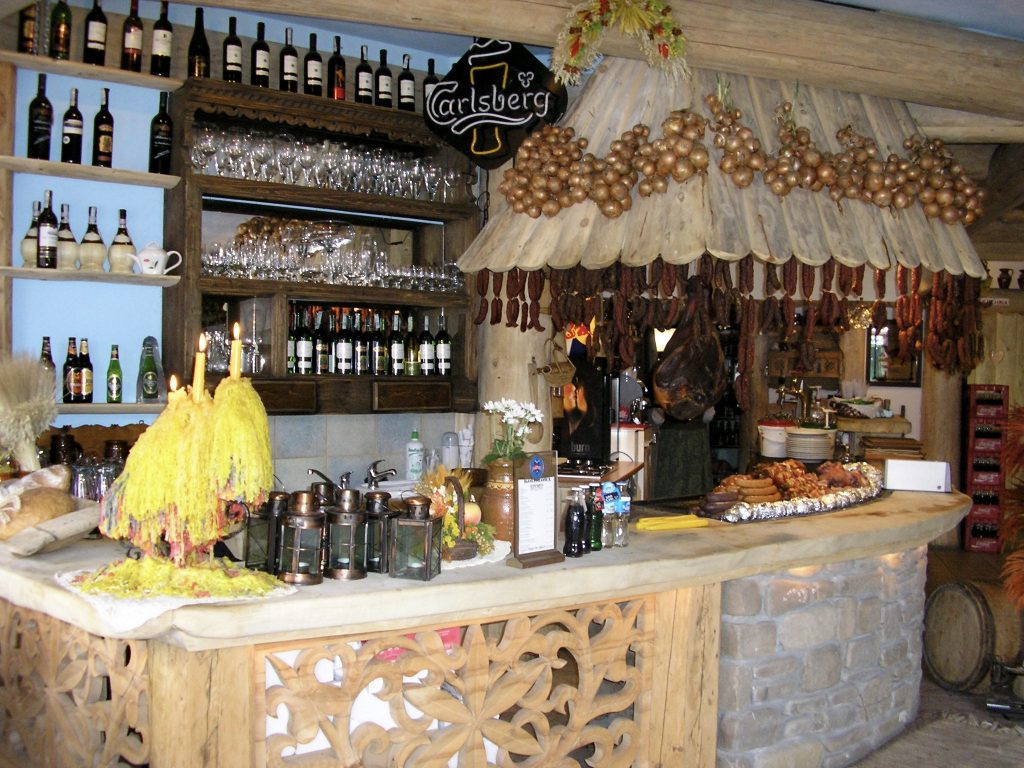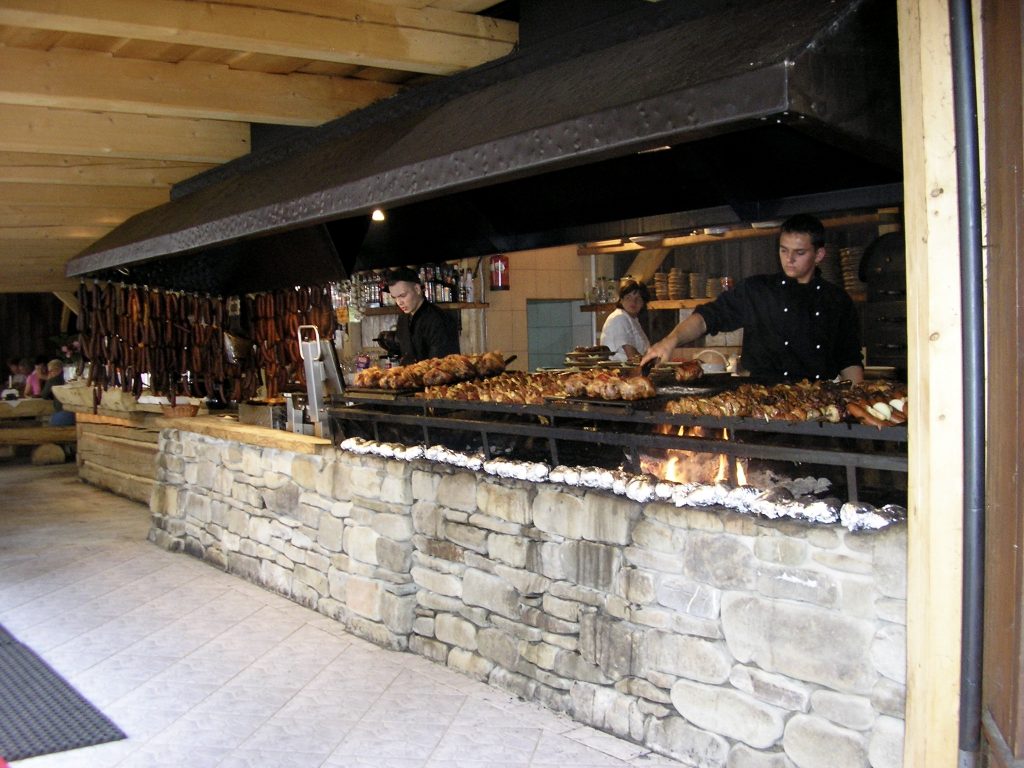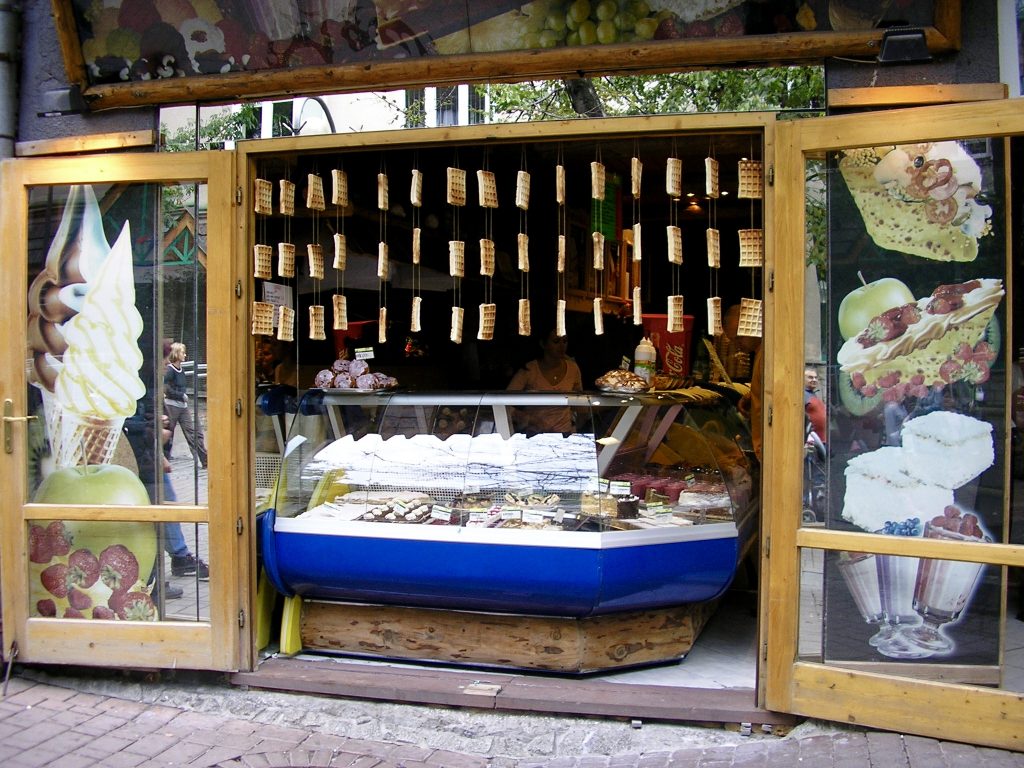How to avoid common mistakes while ordering food at a Polish restaurant. Posted by Kasia on May 19, 2016 in Culture
Dining out at a Polish restaurant is an amazing adventure! Just thinking about it makes me hungry…and makes me want to plan a trip to Poland soon! There are so many traditional Polish restaurants in each city…so many delicious dishes to try. Yum!
So you want to order your meal like a local, right? Nothing easier – you would say. Most of the menus are translated into English. Yes – this is true, however those translations sometimes are not what you think. A lot of times meals are translated “directly” and the same word Poles use for example for toast is not a toast you would get at a restaurant here in USA (Polish toast is a grilled sandwich, most of the times with ham and cheese:) Also, think about big chains that translate their menus and have places located on busy streets…Easy to find…but you what you really want to find is a quiet small restaurant on the side street, with a really home like Polish atmosphere, yummy original food, friendly staff and most likely you will be able to talk to the cook and owners as well! You may not find an English translated menu, but staff will help you choose a great dish and most likely recommend a restaurant’s special:)
Breakfast – Śniadanie
What can you expect ordering śniadanie in Poland? (Check out this blog about breakfast)
Poles love eggs, so yes – you can usually find different types of eggs on the menu:
Jajko sadzone – fried egg
Jajecznica na boczku lub kiełbasie – scrambled egg with bacon or sausage
Jajko na miękko lub na twardo – Soft-boiled or hard-boiled egg
Omlet – omelette
Also, there will be hard-boiled eggs cut into halves with some mayo and chopped chive on top (jajka na twardo z majonezem i szczypiorkiem)! Yummy!
Another great thing you can find on a Polish breakfast table is kanapka (plural: kanapki). They are usually open sandwiches, made of a buttered slice of bread, some salad, meat, cheese, vegetables.
Quite often, you can also order parówki, which are usually light turkey hot dogs. They are served hot on your plate, but do not expect a hot dog bun with them:)
Sometimes, we may find menu terms such as “drugie śniadanie”. This literally means second breakfast.
You can usually order any of the above options, or possibly try something sweeter:)
How about naleśniki na słodko – sweet crepes (usually with jam or fruit filling), naleśniki z pieczarkami lub mięsem – crepes with mushrooms or meat, placki ziemniaczane – potato pancakes, placki ziemniaczane z mięsem i grzybami – potato pancakes with mushrooms and meat.
Obiad is usually translated into lunch.(Make sure to check out this post about Polish lunch) Sometimes it consists of a soup and the main dish. In the menu it’s usually called “zestaw obiadowy”. The basic ingredients used in Polish cuisine are: pork, chicken, beets, cucumbers (pickles), sour cream, mushrooms, different types of sausages. And we can’t forget about cabbage! In Poland we love cabbage in every possible form .
Some typical Polish soups are:
Żurek z jajkiem i kiełbasą – typical Polish sour rye soup with egg and sausage
Barszcz czerwony z uszkami – borsht or beet soup with dumplings (kind of ravioli with meat and/or mushrooms)
Barszcz czerwony z krokietem – borsht served with a breaded crepe filled with either “mięso” (meat) or “grzyby i kapusta” (mushrooms and cabbage).
Kapuśniak z ziemniakami– sour cabbage soup with potatoes
Rosół – typical Polish kind of broth/chicken soup
Ogórkowa – cucumber soup (sour)
Krupnik z kaszą – Polish barley soup
Grochowa – pea soup
Szczawiowa – Sorrel soup (can be served hot or cold)
Drugie danie – second part of obiad – could be any type of meat or fish, usually served with surówka (cold mix of different shredded vegetables), salad and starch (frytki – french fries, ziemniaki – mashed potatoes, ryż – rice).
Kotlet mielony is a ground patty fried on a butter. It almost looks like a burger, but it’s not served with a bun. Kotlet schabowy is a fried breaded boneless pork)
You could also find some other dishes, that are not a part of “zestaw obiadowy”:
Pierogi – the famous Polish stuffed dumplings (sweet or savory), Bigos – cabbage based stew with tomato sauce and various pork (sausage etc), Gołąbki – cabbage leaves stuffed with meat and rice, usually served with a tomato or mushroom sauce, Kaszanka – also called Polish black pudding. It is sausage made with fresh pig’s blood (as much as it doesn’t sound tasty…it is actually one of my favorite dishes), Kopytka i kluski śląskie – a special kind of dumplings made from potatoes and eggs and wheat.
Kolacja (dinner), is usually something light, either kanapka or a salad.(Read here) However, at the restaurants, you can expect to be served a full on dinner, almost obiad style. Often there will be cheeses, cold cuts and vegetables. At my house, we also loved mizeria for dinner with our sandwiches! It is a cold side dish – a mix of sliced fresh cucumber, sour cream or yoghurt, onions (optional) and fresh chopped dill! This dish is also used a lot as a side dish with your obiad.
There is aways room for dessert even after the biggest of meals. Polish cuisine is sure to please your palate. Desserts in Polish are called “deser”. You’ll be sure to find the following popular desserts on most menus:
• Szarlotka – each restaurant will have its own version of this simple, classic Polish apple pie.
• Sernik – Polish style cheese cake, completely different from its American counterpart, totally worth trying. May contain raisins or candied orange peel.
• Makowiec – another classic Polish cake, mostly made of poppy seeds.
• Mazurek – usually baked and served during the Easter Holiday. It is a flat Polish cake made with yeast topped with any combination of almond paste, preserves, dried fruits, nuts and meringues
• Kremówka – Polish cream cake. Sometimes called also Papal Cream Cake since it turned out that Pope John Paul II loved it!
• Faworki – sweet, crispy, fried pastry straws called very often ‘chrust’
• Drożdżówka – yeast-cake with plums or raisins
As you see, Polish cuisine is full of delicious surprises! They are all worth trying! My husband is a huge fan of Polish food and we are always excited to eat out in Poland!
Smacznego!

Build vocabulary, practice pronunciation, and more with Transparent Language Online. Available anytime, anywhere, on any device.
About the Author: Kasia
My name is Kasia Scontsas. I grew near Lublin, Poland and moved to Warsaw to study International Business. I have passion for languages: any languages! Currently I live in New Hampshire. I enjoy skiing, kayaking, biking and paddle boarding. My husband speaks a little Polish, but our daughters are fluent in it! I wanted to make sure that they can communicate with their Polish relatives in our native language. Teaching them Polish since they were born was the best thing I could have given them! I have been writing about learning Polish language and culture for Transparent Language’s Polish Blog since 2010.






